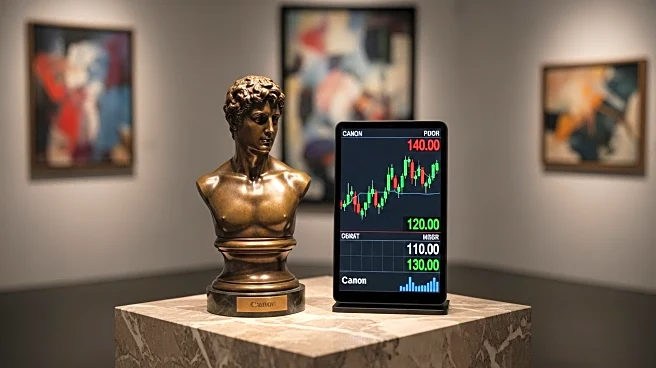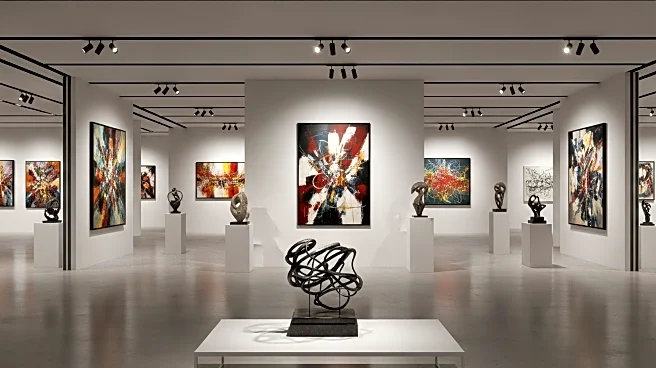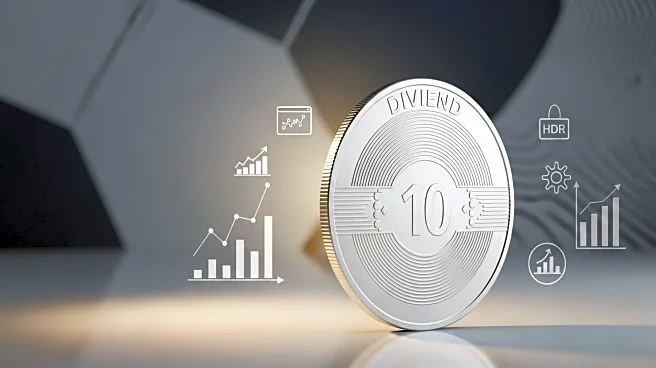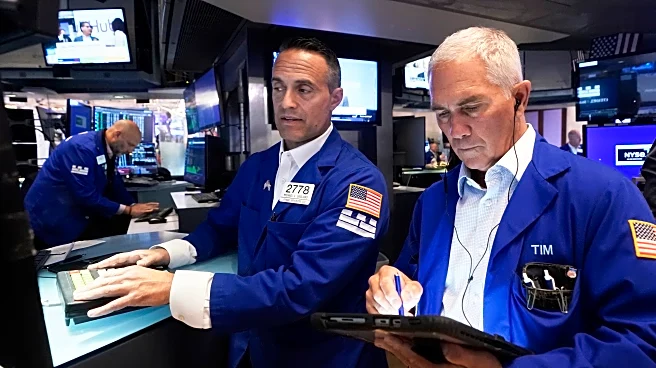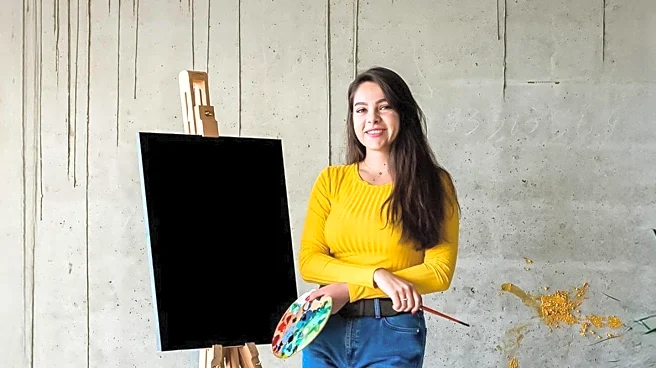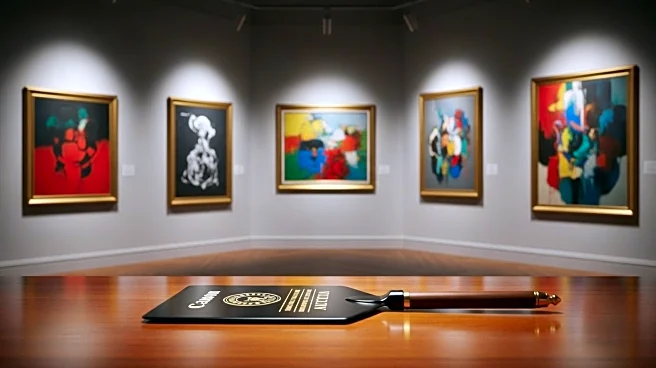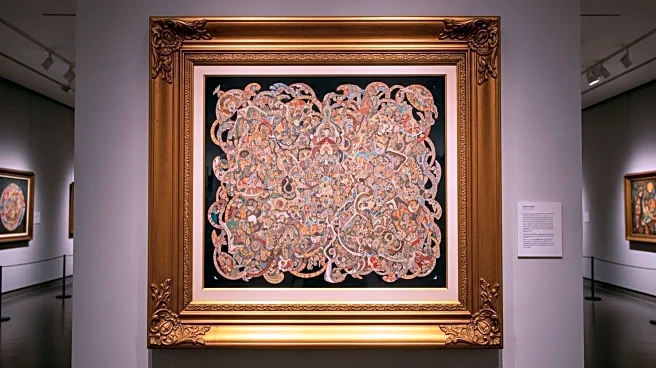What is the story about?
What's Happening?
The art market is experiencing a plateau in attracting high-value spenders, as wealthy individuals increasingly turn to alternative investments such as cryptocurrencies and stocks. Christie’s and Sotheby’s reported similar sales figures for the first half of 2025, with Christie’s raising $2.1 billion and Sotheby’s $2.2 billion. Despite a slight decline in art sales, luxury items saw a significant increase. High transaction costs are deterring wealthy buyers from engaging in art auctions, prompting a shift towards lower-risk private sales. The Mei Moses Art Index indicates that over 50% of auctioned art pieces resulted in negative returns, marking the worst financial performance in the art market this century. Meanwhile, investments in Bitcoin and tech stocks have surged, with BlackRock’s Bitcoin Trust ETF attracting $84 billion in funds, surpassing the total value of global art market sales.
Why It's Important?
The shift in investment preferences among the wealthy has significant implications for the art market and its stakeholders. As investors prioritize financial returns over traditional status symbols like art, auction houses and galleries may face challenges in maintaining sales and profitability. This trend could lead to a reevaluation of art as a financial asset and its role in wealth portfolios. The growing interest in cryptocurrencies and tech stocks suggests a broader economic shift, potentially impacting the cultural and economic landscape. Art dealers and auction houses may need to adapt their strategies to cater to changing consumer preferences and explore new avenues for engagement and sales.
What's Next?
The art market may continue to experience contraction in certain sub-markets, with a focus on selling masterpieces rather than speculative art. Auction houses and galleries might explore innovative approaches to attract wealthy buyers, such as emphasizing the cultural and intellectual value of art. The evolving landscape could lead to a redefinition of art as a status symbol, appealing to a niche market of affluent individuals interested in cultural experiences. As the market adapts, stakeholders may need to address the challenges posed by high transaction costs and explore alternative sales models to sustain growth.
Beyond the Headlines
The art market's current challenges highlight broader cultural and economic shifts, including the impact of technology and financialization on traditional industries. The decline in art sales underscores the need for the market to redefine its value proposition and appeal to new generations of collectors. Ethical considerations may arise as the market navigates the balance between art as a cultural asset and a financial investment. Long-term shifts could include increased transparency and liquidity in art transactions, potentially reshaping the industry's infrastructure and practices.
AI Generated Content
Do you find this article useful?
